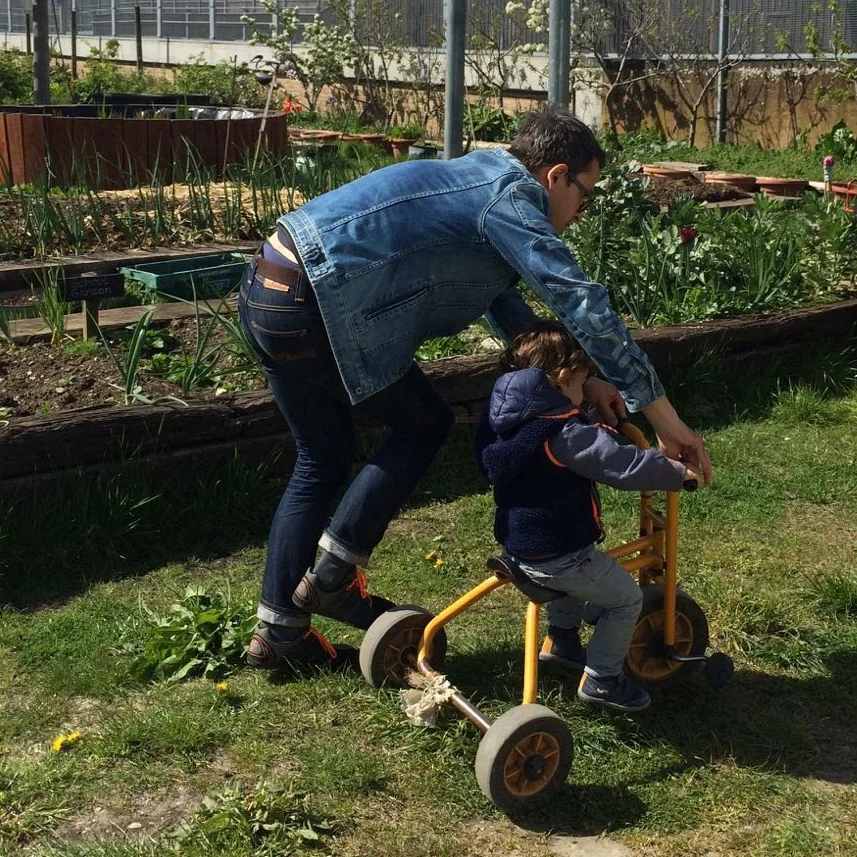Keep It Real
Much like yours truly, Little Boy Green is a creature of habit. He functions best and is happiest when life is a little predictable. Naps, meals and bedtime are all best received when on schedule. It is, therefore, very confusing when he doesn’t play ball and his responses become unreliable. Nothing stresses Mrs Green and myself more than problems with our childrens’ sleep and food (nutrition). Sleep is pivotal in a child’s development, which is why we place such an emphasis on it, but more on that in a future post. Equally important is the nourishment that our boys require for their growth and development. So, when Little Boy Green doesn’t eat, we freak out. He is really not a fussy eater, so when he refuses to eat (and there are days when he'll only eat a few grapes, some (organic, mind) soil from the garden, half a bite of a single penne and a lick of a rusty nail he's picked up at the park), I panic.
Over the past two years, I have learned a lot from our little one and I have referred to other lessons in previous posts. One lesson that has had a big impact on us, as a family, is how we prepare our meals. While we like to encourage Little Boy Green to enjoy the food that we eat, more often than not, we also follow his cues on how to eat. He eats when he is hungry and based on how he is feeling. More often than not, he likes fresh fruit and it always brings a smile to my face when he eats vegetables raw as I am preparing to steam them.
The geeky side of me likes to engage in a spot of research every now and then, and most of that research relates to health and wellbeing. I have done a fair amount of research into the benefits of raw foods and I am particularly seduced by the 80/10/10 diet*. However, knowledge does not equate to knowing and I am often reticent about putting into practice what I have read. Enter Little Boy Green. He does not have much knowledge, and acts principally on instinct, something that I hesitate with.
Before going plant-based, it was hard to imagine a meal without a source of ‘protein’ (a silly concept since all food has protein) just as it is still quite often difficult to consider a meal finished unless it is cooked or has a cooked element to it.
Lesson learned: eat more raw fruit, vegetables and sprouts. Cooked foods are typically dense and rich in calories and many can only be consumed when cooked. While it is true that some foods provide more of certain nutrients once cooked (e.g. lycopene in tomatoes) it is usually because more of that food is consumed (as the water the raw plant contains has evaporated) and cell walls are broken down allowing for some of the nutrients to become (more) bioavailable.
Cooking foods is important for cultural, culinary and nutritional purposes. Eating a diet rich in both raw and cooked foods seems to be where we are at the moment, even if we are tipping the scales towards more raw foods. When I approach a vegetable, my immediate impulse is to see the ways I can use it raw and work on recipes from there. Fruit is almost exclusively eaten raw in our household. Little Boy Green and I sliced and dehydrated apples (we had a lot of apples at one point) and to my surprise he didn't like them preferring instead the unadulterated original.
On busy days, we eat a lot of raw foods (nuts, seeds, salad greens, and fruits), and when we do we feel lighter. We also feel that we have more energy and are well hydrated. Easy ways to incorporate more raw foods is to begin the day with a smoothie and a Raw Pudding Pot. For lunch a large salad with tomatoes, red pepper, shredded carrots, sprouts and avocado (some cooked legumes for bulk, if needed). A lot of fresh fruit throughout the day and a dinner with a lot of raw vegetables and a cooked element such as, pasta, potatoes, grains (rice, buckwheat) and legumes (beans and lentils).
Try out introducing more raw foods and see for yourself- there are many ideas in the Recipe section for inspiration.
*For more visit: http://foodnsport.com/index.php






